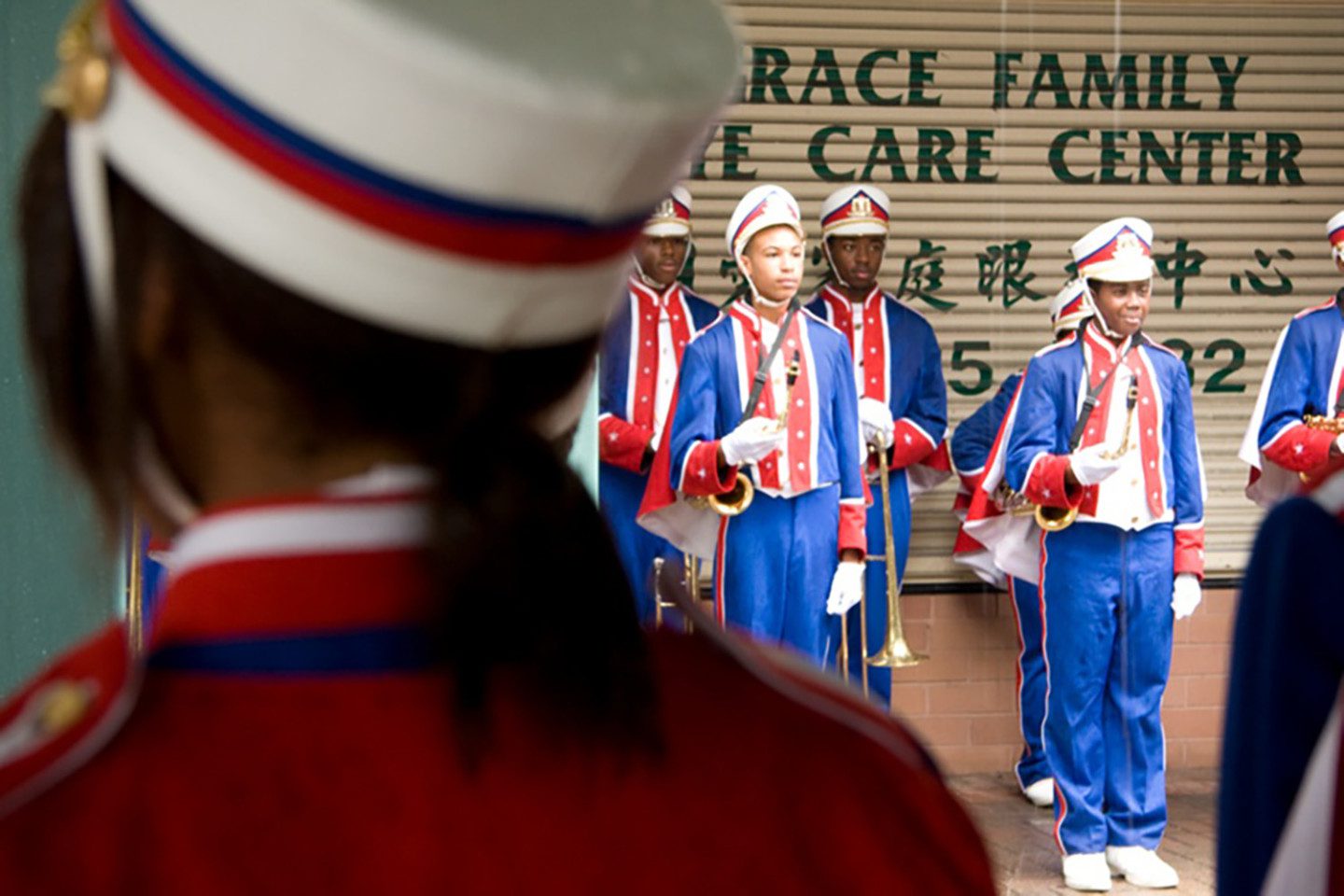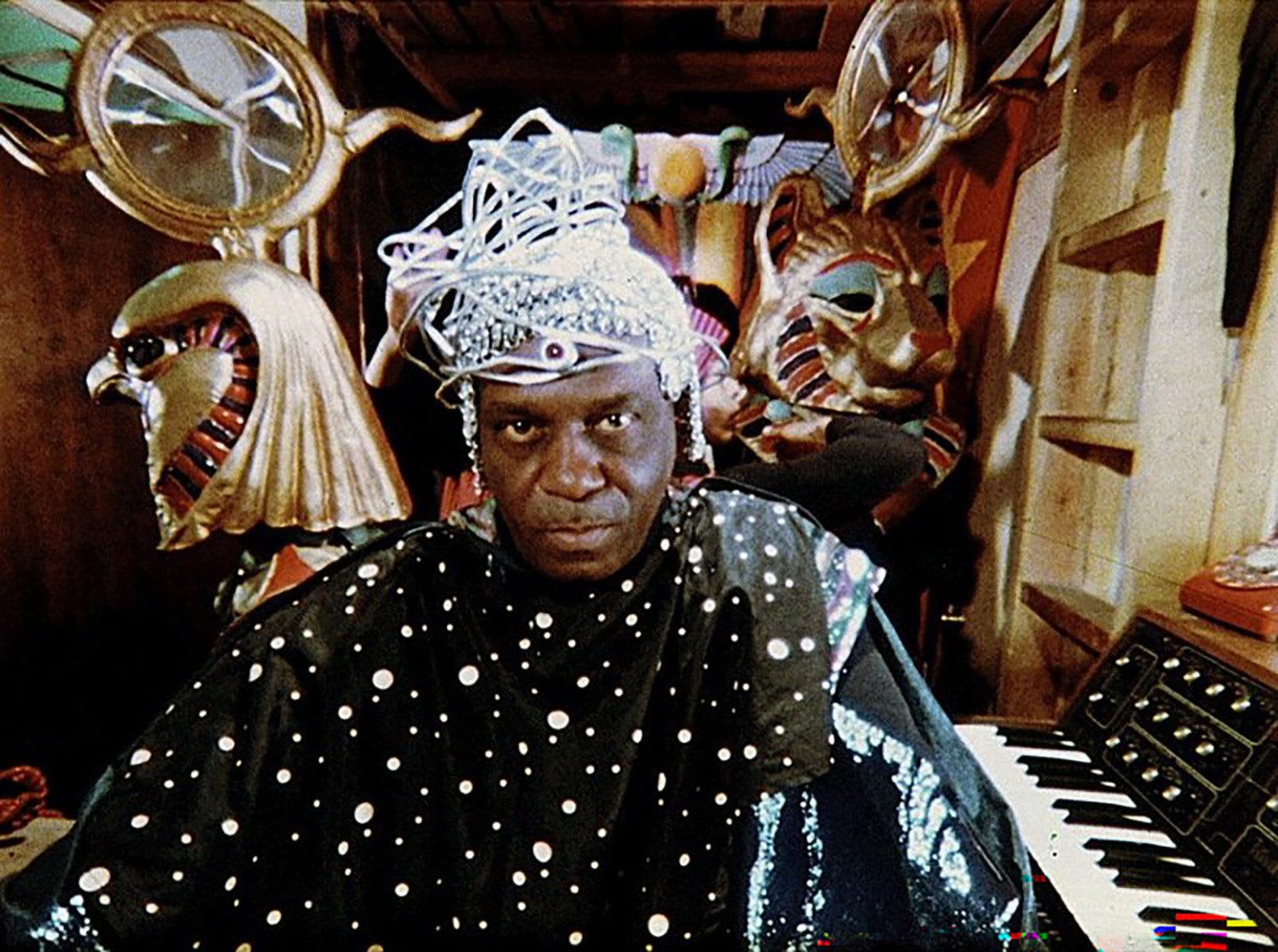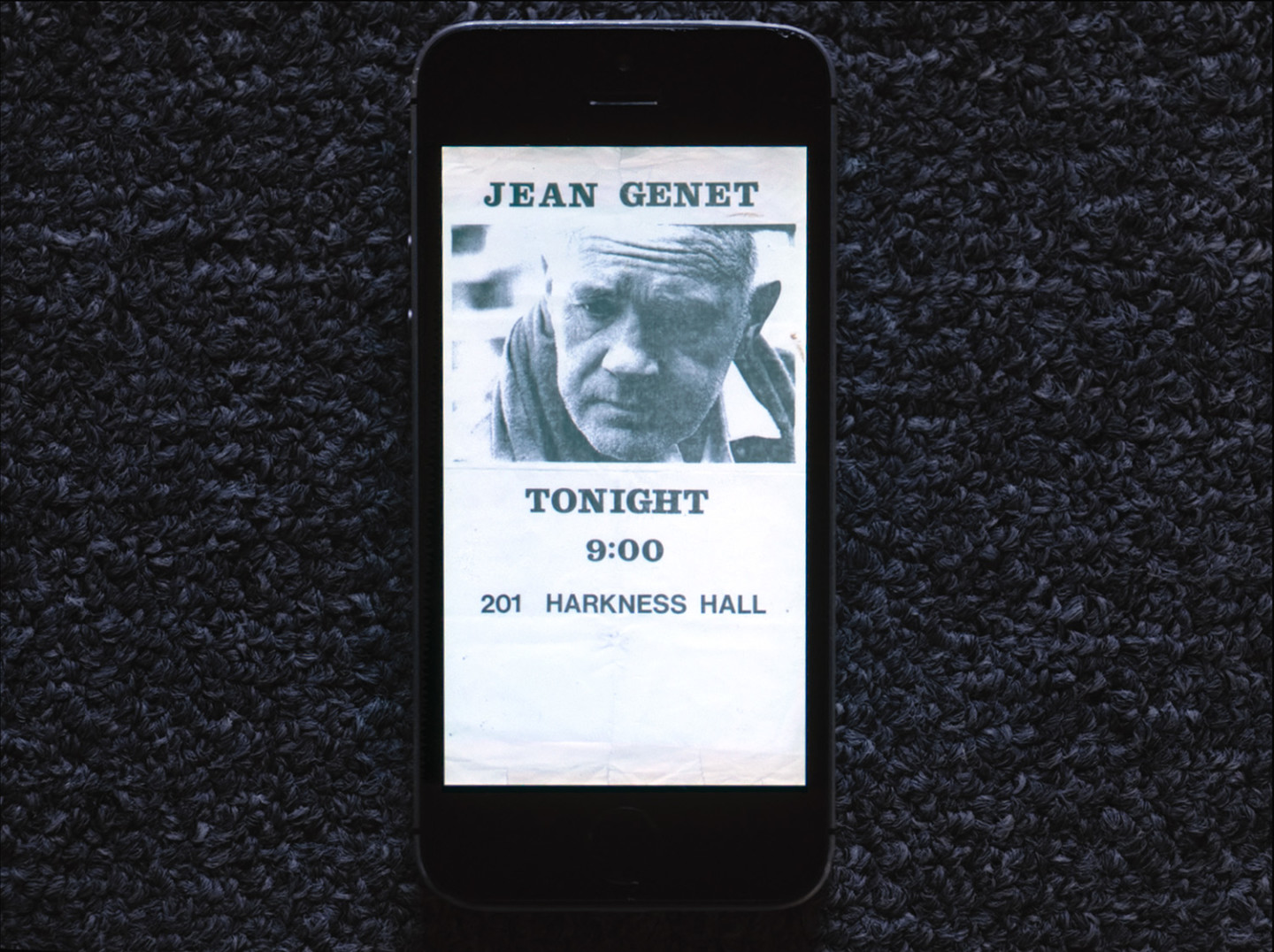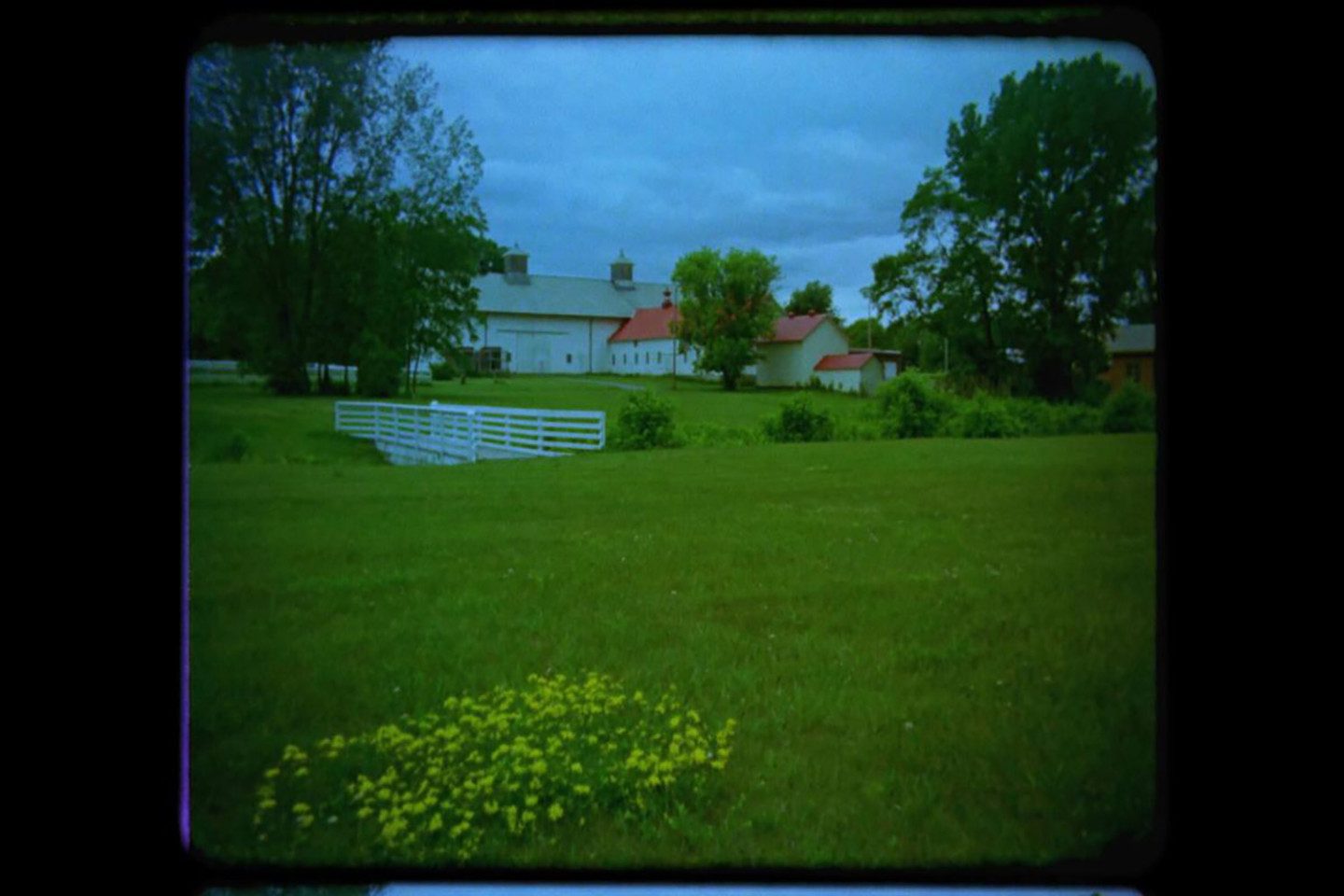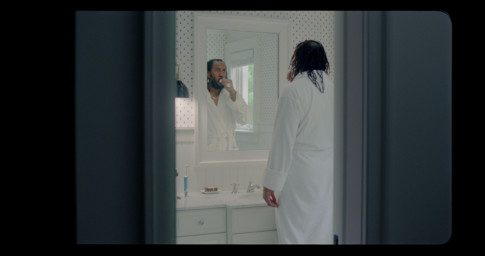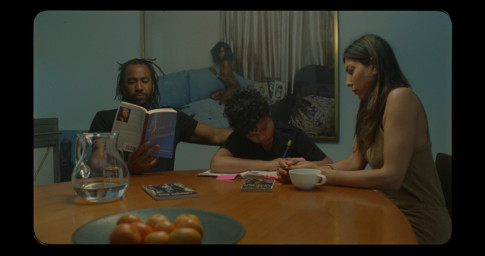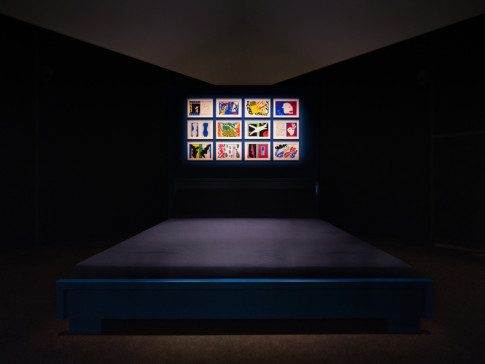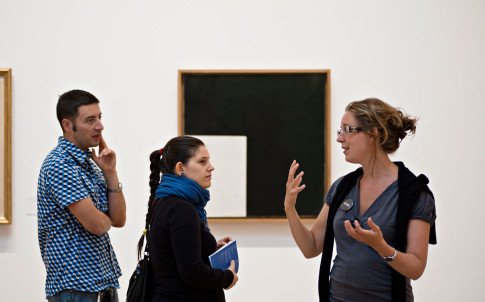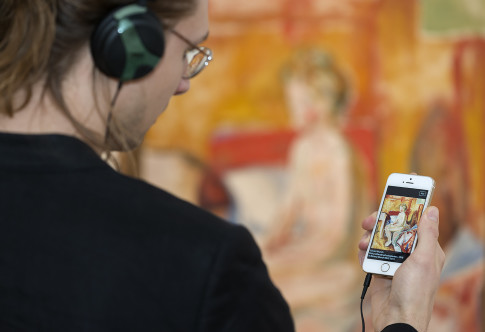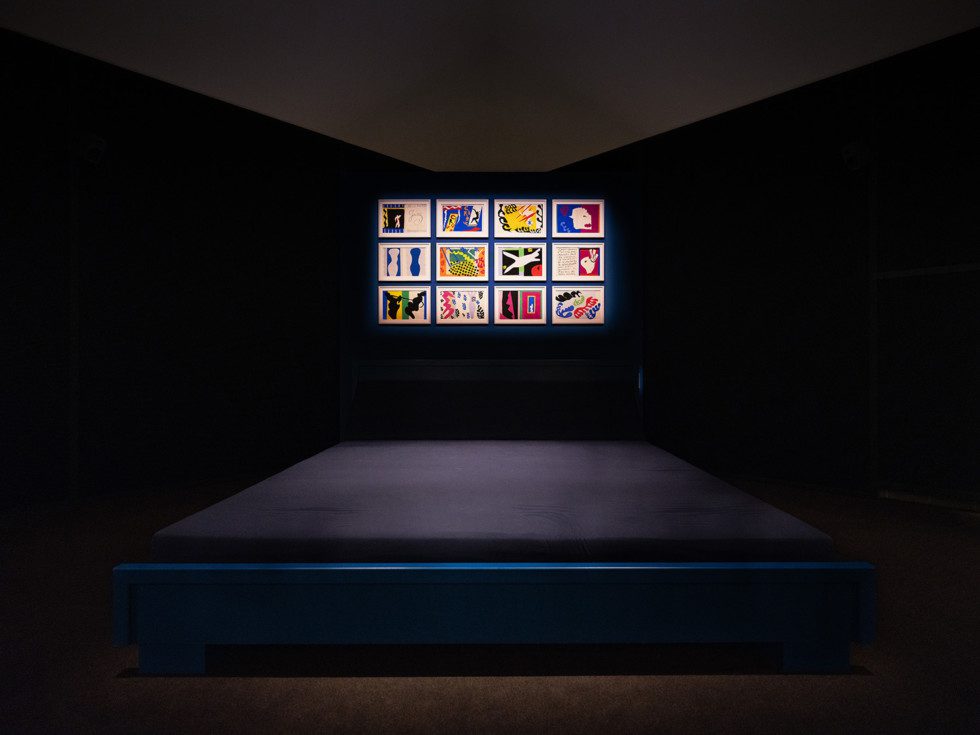
Installation view, "Jazz" Henri Matisse, Jazz serigraphy © Succession H Matisse/Bildupphovsrätt 2024. Photo: Mattias Lindbäck/Moderna Museet
Film Programme
Currently on Display
Chapter 7: When you put your hands on my body
18 June – 11 August 2024
Our body is both an intimate and private space, something which belongs only to us, and a site that other people project on, interpret, and, in the worst instances, invade. In this chapter, this dichotomy is explored in relation to queer bodies, with the two films “When I Put My Hands on Your Body” and “Anthem”.
Curators: Asrin Haidari and Hendrik Folkerts
Films
When I Put My Hands on Your Body
by David Wojnarowicz och Marion Scemama (4 min, 1989)
“When I Put My Hands on Your Body” by David Wojnarowicz (1954–1992) is a portrait of queer desire, loss, and bodily decay, narrated through a sexual encounter. In 1989, after Wojnarowicz had just been diagnosed with AIDS, the artist collaborated with photographer Marion Scemama (b. 1950) on a series of short video works addressing broader issues of sexuality, suffering and death.
In this 4-minute-long video Wojnarowicz reads his lyrical text to the slow-moving images of him and the artist Paul Smith. The two are wrapped in blue light as their bodies melt together.
Anthem
by Marlon T. Riggs (9 min, 1991)
In 1990, the censorship of his previous film “Tongues Untied” placed Marlon T. Riggs (1957–1994) at the center of a violent controversy, initiated by Christian fundamentalists groups and ultra-conservative lawmakers in the USA. This climate of moral panic and culture wars had an enormous personal toll on Riggs, and the short film “Anthem” emerges from this context. Unapologetically, Riggs responded with a call to action filled with anger and pain, as well as desire and queer joy.
This militant anthem invites us to rewrite history and invent new languages of emancipation set to the rhythm of House music via a breakneck montage that blends the words of the poet Essex Hemphill, the dance moves of Willi Ninja, and ethnographic footage of tribal drummers with symbols like the Pan-African flag and the pink triangle of the activist group ACT UP.
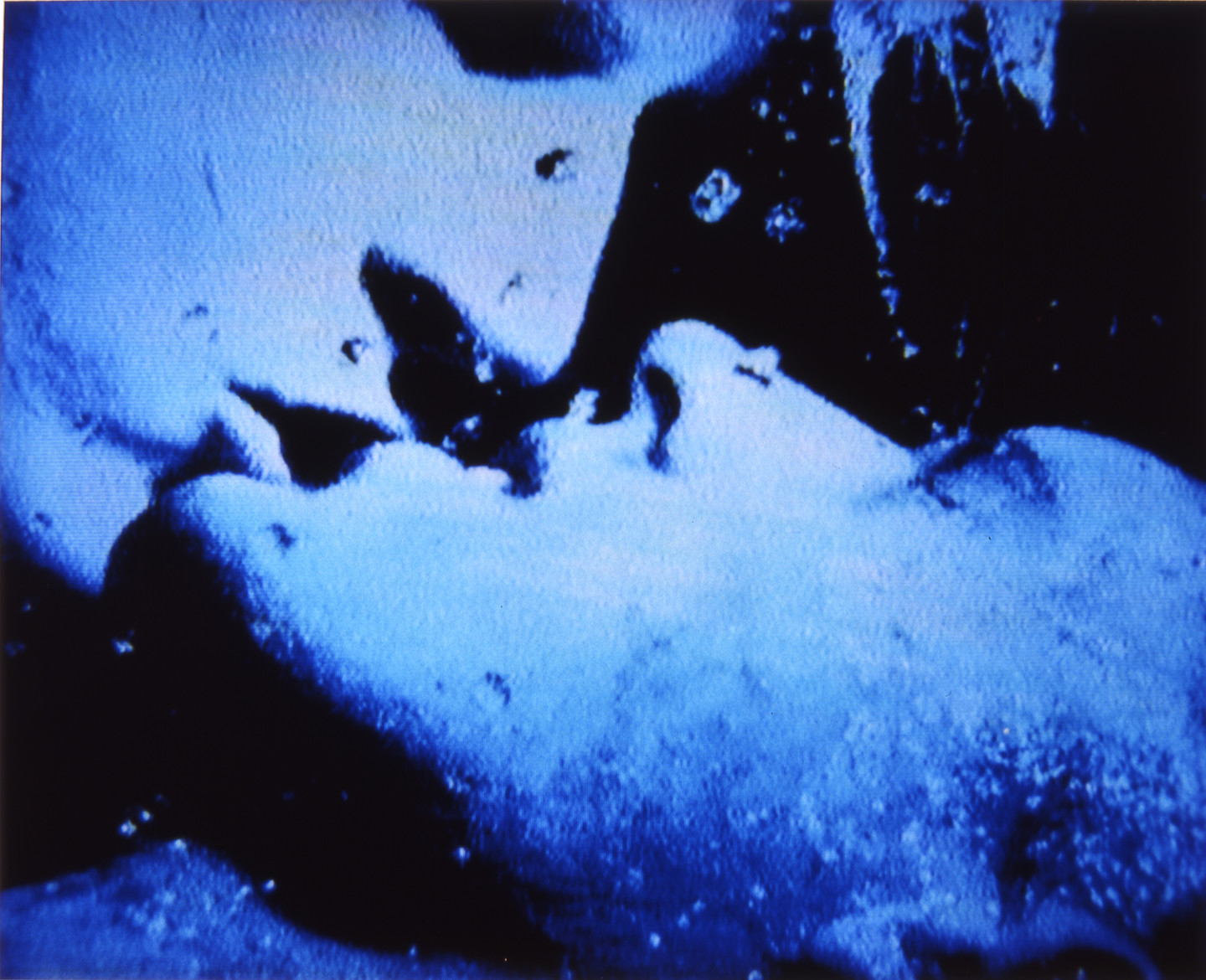
The Politics of Space
30 September–16 November 2023
In the first chapter of the film programme we consider the questions of belonging and self-representation that play a key role in this exhibition – through the lens of artists who work or have worked in Stockholm. The artists examine public space: how we give it meaning, who it ”belongs” to, and how we can activate it differently.’
If the home is ”an inside space”, as Rashid Johnson puts it, that one gets to ”shape and define”, then public space is an exterior space that we all own, shape, and give
meaning.
Sense and Sense (15 min, 2010)
by Every Ocean Hughes
Delay (4 min, 2014)
by Santiago Mostyn
If you could speak Swedish… (23 min, 2001)
by Esra Ersen
Paralyzed (3 min, 2003)
by Klara Lidén
Space is the place
14 November–17 December 2023
In this chapter, we travel to places far and near, through the legacy of jazz legends Sun Ra (1914−1993) and Alice Coltrane (1937−2007). First, we land in Chicago, where artist Cauleen Smith (b. 1967) filmed “Space is the Place (A March for Sun Ra)”. This project draws on the work of the groundbreaking composer Sun Ra, who channeled African-American history, science-fiction, and poetry towards a new vision of the future. He was a key figure in Afrofuturism, in which the histories of slavery and oppression of black people is evoked through fantasy and science-fiction.
Smith captures the spontaneous performance of the Rich South High School marching band playing Sun Ra’s composition Space is the Place. Undeterred by the pouring rain and the evident confusion of onlookers, the young musicians display great enthusiasm playing, singing, and dancing to Sun Ra’s still-powerful drum beat.
We resume our journey with Cauleen Smith: a pilgrimage to utopian spaces across the United States, accompanied by a soundtrack of Alice Coltrane’s “One for the Father” (1978).
Space is the Place (A March for Sun Ra) (11 min, 2011)
by Cauleen Smith
Space is the Place (85 min, 1974)
by Sun Ra
Pilgrim (2017)
by Cauleen Smith
Tony Cokes
19 December 2023–28 January 2024
In this third chapter of the film program, we delve into the work of American artist and filmmaker Tony Cokes (b. 1956).
Cokes started creating video essays in the 1980s with a keen interest in our affective experience of colour and sound. He mixes found material, whether that be documentary footage, fragments from academic texts on black histories, or electronic and popular music.
In his work, Cokes subverts (mis)representations of racial identities, investigating the emergence of house music in Chicago within Afro-American communities in the late 1970s, and the role of music in shaping our shared understanding of cultural history.
Black Celebration: A Rebellion Against the Commodity
by Tony Cokes (17 min, 1988)
Mikrohaus, or the black atlantic?
by Tony Cokes (31 min, 2006–2008)
1!+: a dubstep primer
by Tony Cokes (37 min, 2001)
Lights – Camera – Play!
30 January–10 March 2024
In the spirit of dialogue and improvisation that marks this gallery, two films from the Moderna Museet’s collection here show how play comes into the relationship between artists – collective experiments that the camera appears to have caught in the moment. The two filmmakers share the use of the camera as an engaged participant rather than a neutral observer.
Video artist Charles Atlas (b. 1949) is a pioneer in dance and performance for the camera. In “From an Island Summer”, he follows choreographer Karole Armitage and her dancers during a couple of August days along the Coney Island boardwalk and the streets around Times Square.
Robert Breer’s (1926–2011) “Pat’s Birthday” depicts the celebration of poet Patty Mucha in the company of her husband, artist Claes Oldenburg, and a circle of their artist and stage friends. Oldenburg had been working with happenings in the early 1960s when he and Breer decided to make a film together. He orchestrated a series of whimsies for the birthday celebration at the couple’s countryside house, giving Breer free rein with the camera.
Curator: Lena Essling
From an Island Summer
by Charles Atlas (13 min, 1983–1984)
Pat’s Birthday
by Robert Breer (13 min, 1963)
shitfictions
12 March–7 April 2024
What if the bed becomes a space of shelter and refuge, containment and lockdown, speculation and shitfictions? Performer and curator Michelangelo Miccolis and artist and performance producer nick von kleist respond:
“Stuck in quarantine we, Michelangelo and myself, have kept ourselves occupied with a deluge of cinematic nostalgia. We found simply rewatching tedious, so we began watching movies with subtitles we had downloaded from other films and tv. One of our first experiments was watching “Lost in Translation” (2003) with subtitles from Ingmar Bergman’s “Persona” (1966). The moment Scarlet Johansson’s face came on screen with the subtitle: ‘Elisabet Vogler”– we immediately paused it and burst into laughter at the random synchronicity and absurdity in the new collage.
This began a daily growing archive with this and more subtitles from “Uncle Boonmee Who Can Recall His Past Lives” (2010), “The Devil Wears Prada” (2006), “Inland Empire” (2006), “Scenes from a Marriage” (1973), “Crimes of the Future” (2022), and many more. Even with this expanding incidental archive, we keep returning to Elisabet Vogler.
This process centers on seeing. Extracting and blending what we choose to remember and to archive, and how that frames what we can convey. This random fan fiction is really just that, a reimagining and record of our experience, while we tossed the title Elisabet Vogler between one another.”
shitfictions
by Michelangelo Miccolis and nick von kleist (Random and continous, 2020-today)
Bouchra Khalili – Twenty-Two Hours
23 April–16 June 2024
A key figure in Bouchra Khalili’s film installation “Twenty-Two Hours” is Jean Genet, the French writer and political activist, who came to the United States between March and May 1970. He was there at the invitation of the Black Panther Party, a Marxist and Black power organization founded in 1966.
In Khalili’s “Twenty-Two Hours”, Quiana and Vanessa, two young African-American women from Cambridge (USA), examine Genet’s visit to New Haven. As much storytellers as film editors, the young women combine fragments of images, sounds, stories, and film footage, to tell the story of Genet’s commitment to the BPP. Simultaneously, Doug Miranda, a former prominent member of the BPP who was involved in organizing Genet’s tour on the East Coast, narrates his meetings with Genet and his own dedication to the Party.
“Twenty-Two Hours” asks the question “Who is the witness?” Is it Genet who stated that he came to the U.S. to bear witness to the repression suffered by the Party? Is it Doug Miranda bearing witness to the struggle for liberation to which he dedicated himself? Or is it Quiana and Vanessa who commit to calling the ghosts of emancipatory history?
Twenty-Two Hours
by Bouchra Khalili (43 min, 2018)
